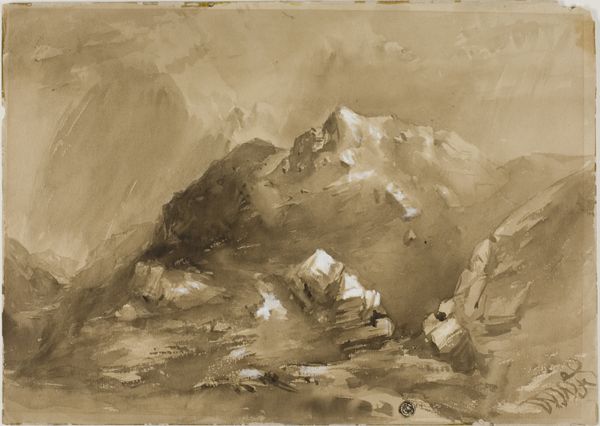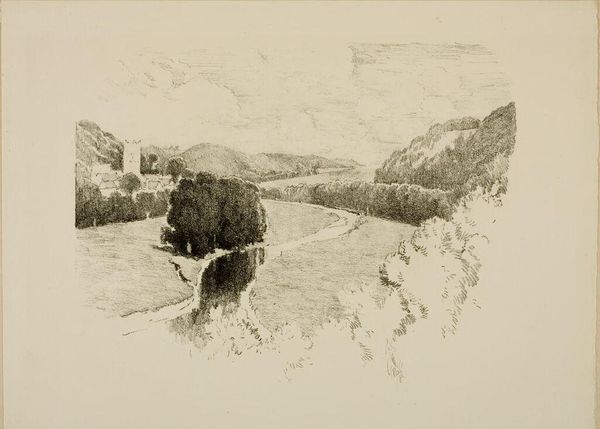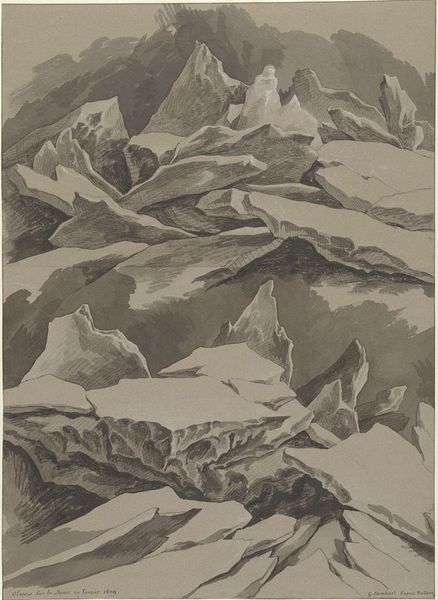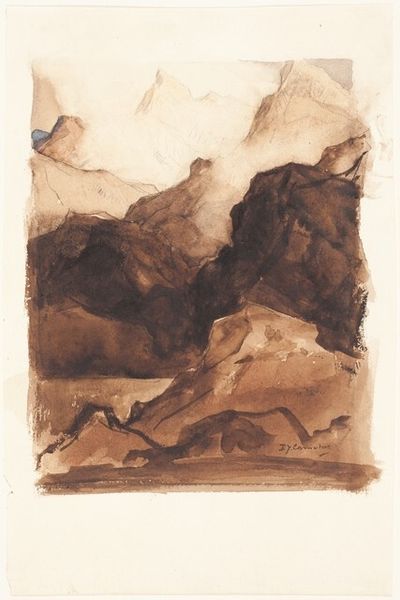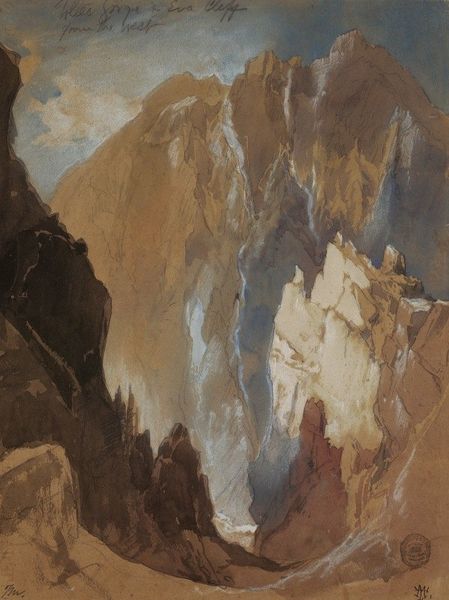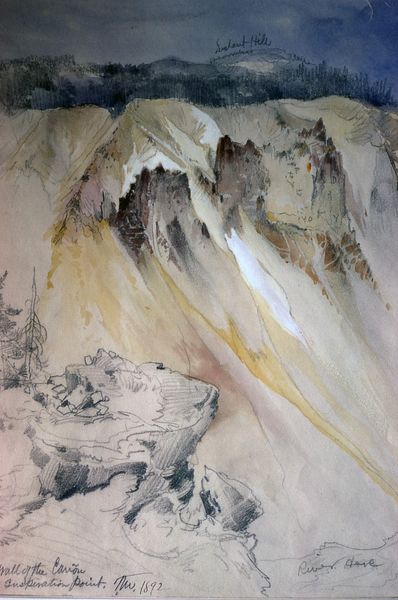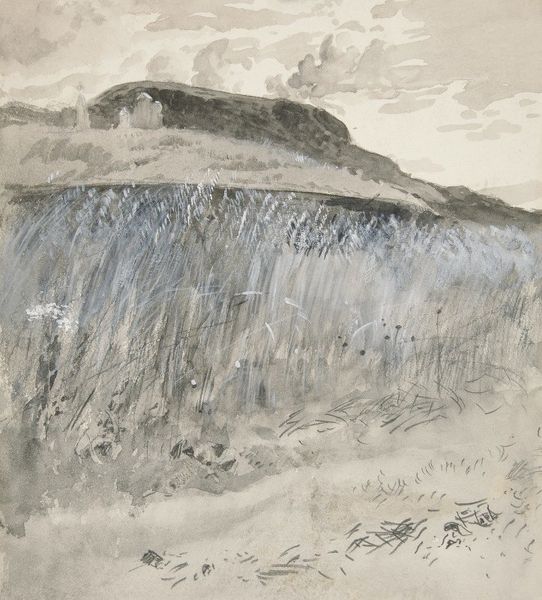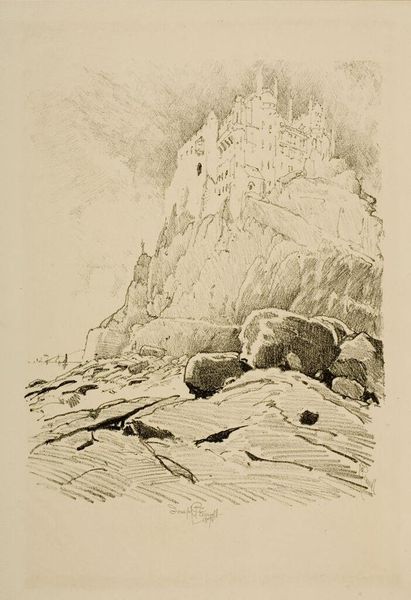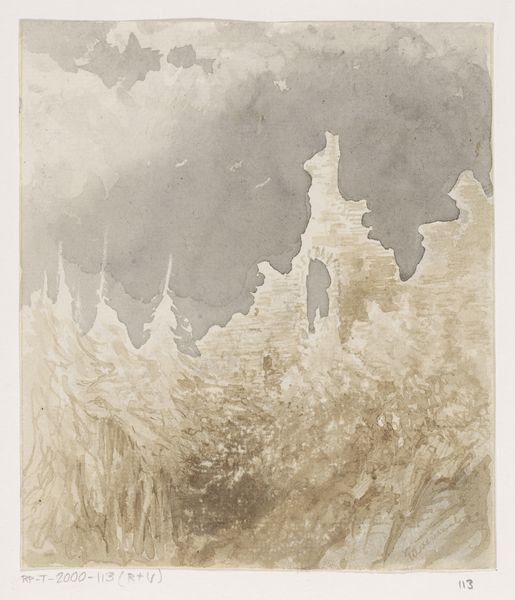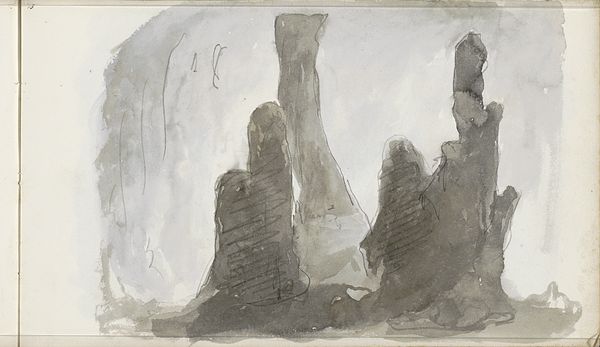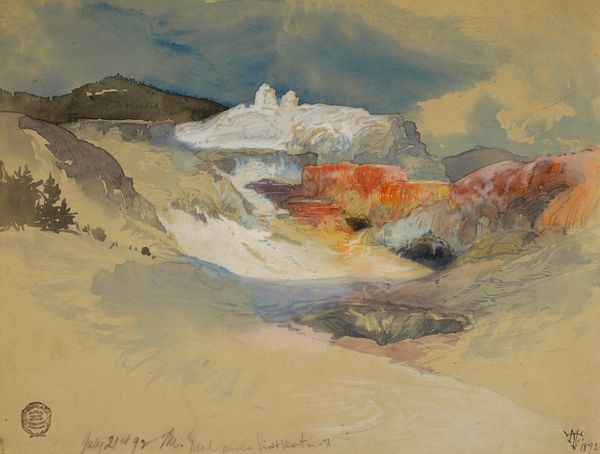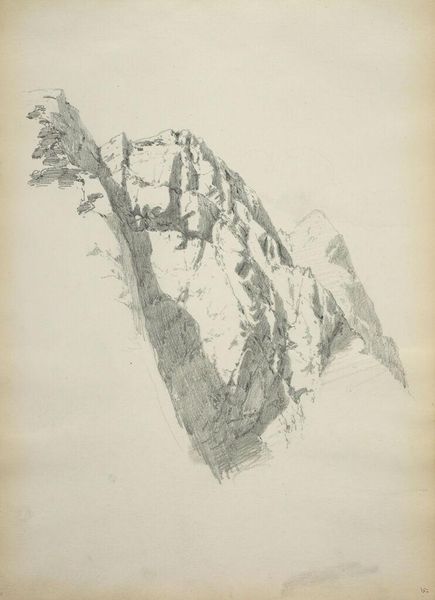
Copyright: Public Domain: Artvee
Curator: Here we have Thomas Moran’s “Study, Ruxton, Colorado,” rendered in pencil around 1901. It’s a stunning example of the Hudson River School's influence. Editor: The immediate feeling I get is stillness and quiet observation. It’s primarily tonal, variations of gray hinting at different textures of rock, water, and forest. What a stark simplicity. Curator: Moran was renowned for his depictions of the American West. It's fascinating how this seemingly simple sketch embodies the era's fascination with westward expansion and the mythos built around the 'untouched' landscape. Editor: Absolutely. But looking closely, it's all about the labor, isn't it? Pencil is such a humble material, but Moran uses it to build layer upon layer. Notice the various smudging and rendering methods - this level of detail wasn't simple 'observation,' but material expertise applied with immense care. Curator: That's a brilliant point. The pencil medium democratizes the artistic process somewhat, moving away from the grand oil paintings more commonly associated with the movement. Perhaps it suggests a growing accessibility to the landscape itself, facilitated by expanding railroads. Editor: Precisely! And beyond the aesthetic, think about the conditions for creating art at this time and in this place, including transportation, and acquisition of these pencils. Labor practices surrounding pencil production themselves have a hidden narrative embedded in this drawing. The ‘nature’ here isn't some pure, untouchable ideal; it is mediated through materials and processes. Curator: Indeed, understanding the work within its historical context gives us much more meaningful appreciation. Consider Moran’s other works displayed in Congress, the direct implications to creating a sense of cultural legitimacy. Editor: So while the work suggests the grandeur of landscape, at its heart is the labor involved. Not just the artist's, but the extraction and manufacturing involved to create the materials themselves! This connects the art to a wider story of American production. Curator: The image, therefore, operates as a symbol of manifest destiny, romanticized labor, and material gain of landscape itself! Editor: Seeing these social-historic, political, and even physical layers…that elevates how I will observe landscapes moving forward!
Comments
No comments
Be the first to comment and join the conversation on the ultimate creative platform.
